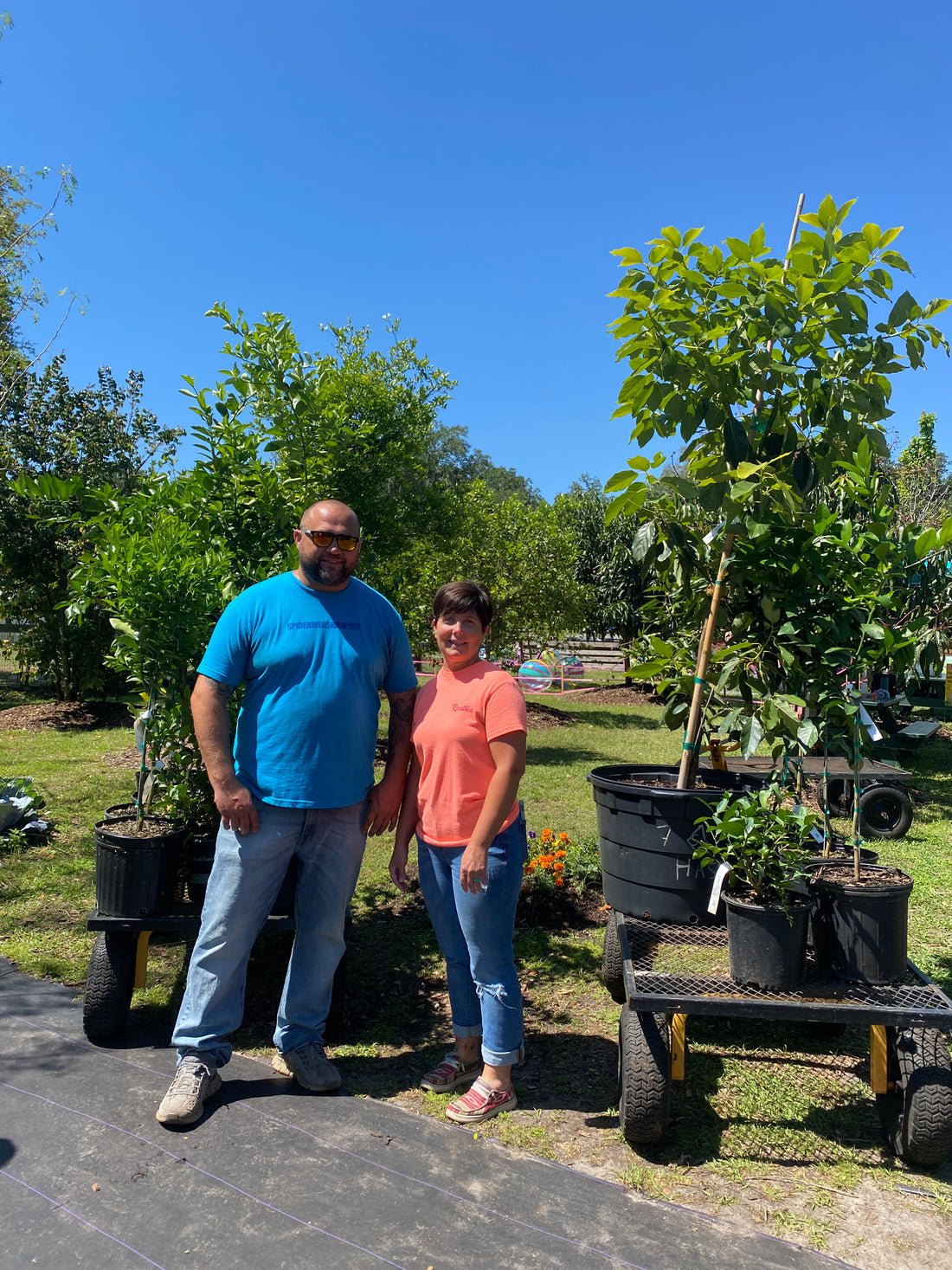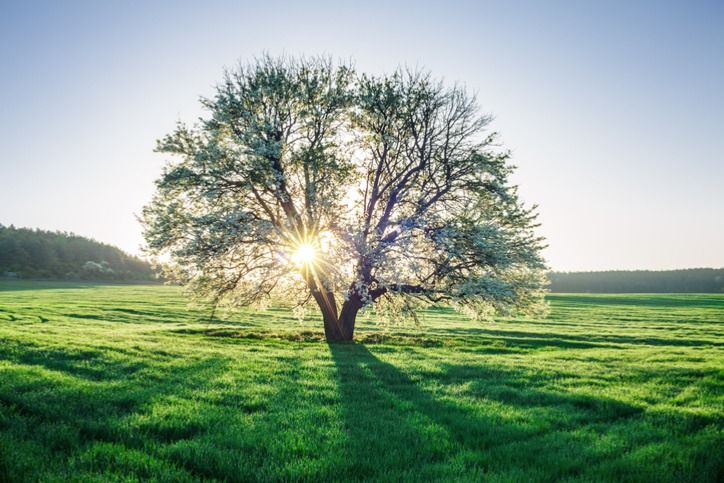Are you thinking about adding trees to your Florida landscape? Knowing the best month to plant trees can make all the difference in how well they grow and thrive.
In Florida’s unique climate, timing is key to helping your trees develop strong roots and withstand the heat and dryness of summer. If you want your trees to flourish and bring beauty and shade to your yard for years to come, understanding when and how to plant is essential.
Keep reading to discover the ideal months for planting trees in Florida and the simple tips that will set your trees up for success. Your future garden will thank you!

Credit: advancetreepros.com
Best Planting Months
Choosing the right month to plant trees in Florida affects their growth and survival. The state’s climate means timing is key for healthy trees. Cooler months help young trees settle in before hot weather arrives.
Planting at the right time lets roots grow strong. This prepares trees to handle summer heat and dry spells. Understanding the benefits of each season guides better planting decisions.
Fall And Winter Advantages
Fall and winter, from October to February, are the best months to plant most trees in Florida. The cooler air lowers stress on new trees. Soil stays warm enough to support root growth below ground.
Trees planted now develop strong roots during their resting phase. This root growth helps them survive summer heat and drought. Water is usually more available in these months, aiding tree establishment.
These seasons reduce the risk of transplant shock. Trees can focus energy on roots instead of leaves. This leads to healthier, more resilient plants in the long run.
Spring Planting Considerations
Spring is a good time for certain trees that need more growing time. Trees like dogwoods and magnolias do well when planted before summer. They require regular watering to thrive in warmer months.
Planting in spring means trees face heat and possible dry spells early. This can be tough for young trees without enough care. Consistent watering and soil preparation become very important.
Spring planting suits areas with mild temperatures and steady rain. It allows trees to grow strong before the cooler fall and winter months arrive.
Seasonal Factors
Seasonal factors play a key role in deciding the best month to plant trees in Florida. The state experiences distinct wet and dry seasons. Each season affects tree growth differently. Understanding these effects helps you choose the right time for planting. Proper timing improves tree survival and growth.
The rainy and dry seasons bring unique conditions. These influence soil moisture, temperature, and stress on young trees. Choosing the season that matches your tree type and care ability makes a big difference.
Rainy Season Benefits
The rainy season in Florida runs from May through October. Heavy rains keep the soil moist. This natural watering reduces the need for extra irrigation. Young trees get consistent moisture, which helps root development.
Warm temperatures during this season boost growth speed. However, the heavy rain can also cause waterlogging. Good soil drainage is important to avoid root damage. Planting during the rainy season suits trees that handle wet soil well.
Dry Season Conditions
The dry season lasts from November through April. It brings cooler weather and less rain. Cooler temperatures reduce stress on newly planted trees. Soil warms slowly, which supports steady root growth.
Since rain is scarce, watering becomes crucial. Regular watering helps trees establish strong roots. This season suits most trees because the risk of heat stress is lower. Planting during the dry season allows trees to prepare for summer heat.
Tree Type Timing
Timing your tree planting in Florida depends on the type of tree. Each tree type has unique needs for root growth and weather tolerance. Understanding these needs helps the tree survive and grow strong. Choose the right month to plant for the best results.
Fruit Trees
Plant fruit trees mostly in the fall season. October through February is ideal for citrus, bananas, and pomegranates. This period offers cooler weather and moist soil, which helps roots develop well. Some fruit trees also do well if planted in early spring. Water them regularly during hot months to avoid stress. Proper timing boosts fruit yield and tree health.
Evergreens
Evergreens thrive when planted in fall or spring. Avoid the hot summer months as they can stress young evergreens. Fall planting lets roots grow before winter cold. Spring planting supports growth before the summer heat. Keep the soil moist and mulched to protect the roots. Healthy evergreens add beauty and shade to your yard.

Credit: alandofdelight.com
Regional Planting Tips
Planting trees in Florida requires understanding regional climate differences. Each area has unique weather patterns affecting tree growth. Knowing these helps you choose the best planting time and care methods. Proper planting leads to stronger, healthier trees that thrive year-round.
South Florida
South Florida has a tropical climate with warm temperatures year-round. The rainy season runs from May through October. This period is ideal for planting most trees because natural rainfall supports growth. Planting during these months reduces the need for extra watering.
Fall and winter are milder but drier. If planting then, regular watering is essential. Choose tree species that tolerate heat and humidity well, like palms and citrus trees. Prepare the soil by adding organic matter to improve drainage and nutrition.
North Central Florida
North Central Florida experiences cooler winters and hotter summers than the south. The best planting time is from fall through early spring. Cooler weather reduces stress on young trees, allowing roots to develop before summer heat.
Avoid planting in summer due to intense sun and dry conditions. If summer planting is necessary, water trees daily and mulch around the base to retain moisture. Select native trees adapted to this region’s climate for better survival.
Soil And Site Preparation
Proper soil and site preparation is crucial for planting trees in Florida. Healthy soil helps roots grow strong and trees thrive. Preparing the site correctly reduces stress on young trees. It ensures they get enough nutrients and water from the start.
Choosing the right spot with good soil drainage is important. Avoid areas where water pools after rain. Clear the planting area of weeds and debris. This prevents competition for nutrients and water.
Soil Preparation
Test the soil before planting to check pH and nutrients. Florida soils often need lime to reduce acidity. Add organic matter like compost to improve soil texture and fertility. Loosen the soil to at least 12 inches deep. This allows roots to spread easily and absorb water better. Avoid planting in compacted soil. It restricts root growth and can cause poor tree health.
Mulching Benefits
Mulch helps keep soil moist and cool. It reduces water evaporation, so trees need less frequent watering. Mulch also stops weeds from growing near the tree. Weeds take nutrients and water from young roots. Use organic mulch like wood chips or bark. Apply a 2 to 4-inch layer around the tree base. Keep mulch a few inches away from the trunk to prevent rot.
Watering And Care
Proper watering and care are essential for trees planted in Florida. Young trees need consistent moisture to grow strong roots. The right care helps trees survive heat and dry spells common in Florida. Protecting trees from harsh weather improves their health and growth.
Watering Young Trees
Newly planted trees require regular watering to establish roots. Water deeply once or twice a week, depending on rainfall. Avoid shallow watering, which encourages weak roots. Use mulch around the base to keep soil moist. Check soil moisture regularly to prevent drying out. During hot months, increase watering frequency to reduce stress on the tree.
Protection From Weather
Florida’s weather can be tough on young trees. Protect trees from strong winds with stakes or windbreaks. Shade young trees during extreme heat to prevent leaf burn. Cover trees during cold snaps to avoid frost damage. Remove protection as trees grow stronger. Proper protection reduces stress and helps trees thrive.

Credit: www.skyfrogtreeservice.com
Frequently Asked Questions
When Should You Plant Trees In Florida?
Plant trees in Florida from October to February for cooler, wetter conditions that help root growth. Water regularly if planting in spring or summer. Choose fall for most trees and fruit trees like citrus. Mulch and protect young trees from sun and wind.
What Is The Rule Of 3 In Gardening?
The rule of 3 in gardening suggests planting groups of three plants together. This creates visual balance and enhances garden aesthetics. It also helps plants support each other’s growth and improves overall garden health. This simple technique boosts garden design and plant vitality effectively.
Is October Too Late To Plant Trees?
October is a good time to plant trees in many regions, including Florida and Texas. Cooler temperatures reduce stress. Soil remains warm enough for root growth. Trees establish strong roots before winter. Ensure proper watering and soil preparation for best results.
What Is The Best Tree To Plant In Florida?
The best tree to plant in Florida is the live oak due to its adaptability and drought resistance. Citrus trees also thrive well in Florida’s climate. Plant during fall or winter for optimal root growth and tree health.
Conclusion
Planting trees in Florida during fall and winter offers the best start. Cooler weather and moist soil help roots grow strong. Trees planted now face less stress from summer heat. Proper watering and soil care boost tree health. Choose the right time for your tree type and location.
A healthy tree today means a greener Florida tomorrow. Start planting early for lasting growth and beauty.
